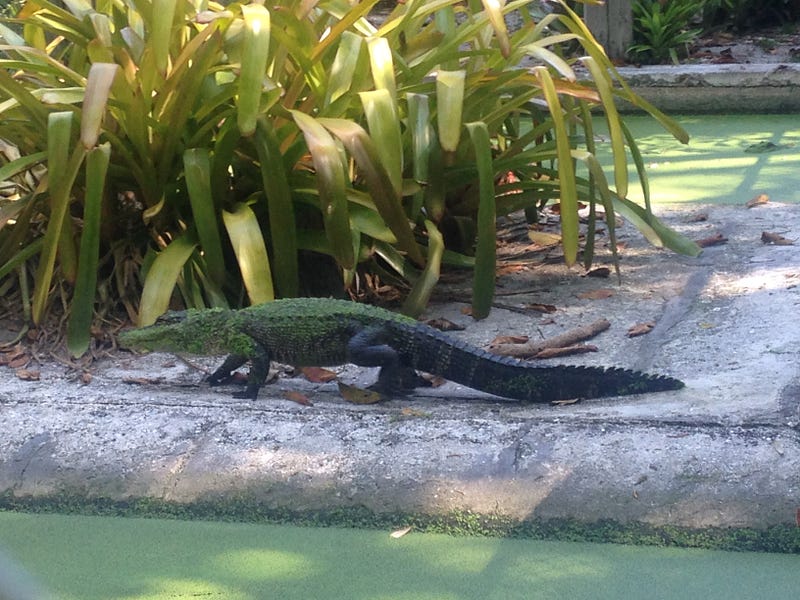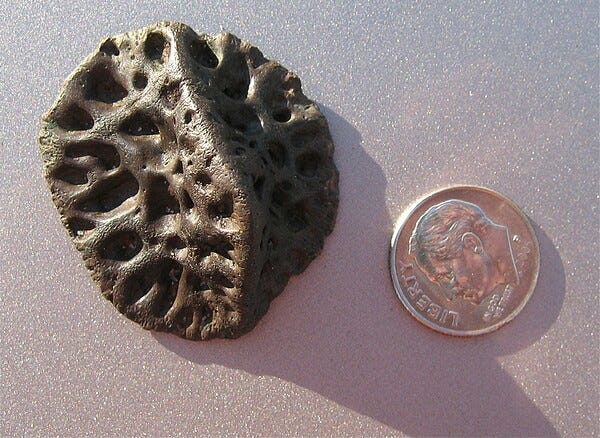I think it is appropriate for our final story on Endangered Species to be about a fascinating reptile and complete conservation success, as well as a symbol for the state where I now reside. Unlike the gray bat from last week, this species is considered fully recovered. As you can probably tell by the above picture, we’ll be talking about the American alligator, Alligator mississippiensis. This animal is so ubiquitous in Florida now, it can sometimes be difficult to remember the threats it once faced.
The American alligator is a freshwater crocodilian native to the southeastern United States, including large portions of North Carolina, South Carolina, Georgia, Florida, Alabama, Mississippi, Louisiana, and Arkansas, as well as eastern Oklahoma and Texas. A piece of common wisdom in present day Florida is that if a body of fresh water is large enough to accommodate an alligator, it is best to assume that at least one is present. This includes ponds, lakes, rivers, marshes, and swamps. As they are primarily ambush predators, their coloration is generally dark and drab to assist in looking like a floating log. Alligators are not truly green, unless they get covered in aquatic algae like the picture below.

The bumps along an alligator’s back are known as osteoderms (a word created from the Greek roots for ‘bone’ and ‘skin’). These are bony structures incorporated into the skin of many reptiles and amphibians that can serve as defensive armor plates. However, in alligators and other crocodilians, the osteoderms are partially hollow and contain a large number of blood vessels. While we usually think of blood as a transporter of oxygen, it is also highly efficient for the transfer of heat.

As reptiles, alligators are ectothermic (they do not produce their own body heat and are instead reliant on the outside environment to maintain their internal temperature). They are often seen basking in the sun to warm up, similar to the turtles shown in one of my earliest stories on basking. The blood vessels in the osteoderms allow for efficient transport of the sun’s heat to the rest of the body. Therefore, they could be considered an armor-plated solar panel. When discussing alligators with others, this of one of my favorite aspects to share and I will often refer to them as ‘living solar-powered tanks’.
Overall, the crocodilian body plan is quite well-adapted to its environment, which is why it has changed little in millions of years and can be considered a ‘living fossil’. Unfortunately, for some time, there has been uncertainty as to how long the first word of that title would continue to apply for some crocodilian species. Alligator mississippiensis was one of those. Habitat loss and hunting led to population declines and the addition of the species to the US Endangered Species Act when it was initially created in 1973 (though it was initially listed under a precursor law in 1967). This protection allowed alligator numbers to recover throughout their range as state and federal agencies were able to closely monitor their alligator populations.
In 1987, only twenty years after its original listing, the US Fish and Wildlife Service delisted the American alligator as fully recovered. It is currently listed a species of Least Concern by the IUCN. While commercial sale of alligator meat and leather are growing more common, the sale of alligator products is still regulated by the USFWS and the Convention on International Trade in Endangered Species of Wild Flora and Fauna (CITES). This is because of the close resemblance of the alligator to the American crocodile, Crocodylus acutus, which is still on the Endangered Species List and considered Vulnerable by the IUCN. This situation is not unique, as such protections can reduce the taking of Endangered Species, either by accident or in an attempt to circumvent prohibitions, by reducing the targeting of species that can be easily confused for them.
While a number of crocodilian species are still under great threat, such as the unique-looking gharial, Gavialis gangeticus (seen below), a Critically Endangered species with only a few hundred individuals remaining, I believe that the relatively speedy recovery of the American alligator is a good reason to have hope for Threatened species of all sorts. In my introduction to Season 3, I indicated that I would focus on species that were not ‘charismatic megafauna’. While the alligator certainly qualifies as megafauna, I would argue that it is far from charismatic (though it is somewhat difficult to evaluate this dispassionately given my own personal fondness for reptiles). In fact, the threat of alligator attack is often exaggerated in our minds in similar ways to the threat of shark attack. Florida averages about 5 alligator attacks per year. Less than 10% of these are fatal. However, despite our fears, the alligator was given the opportunity to come back from the brink. I would like to believe that it is not the only species that can do so.

The plight of Endangered Species can seem like an insurmountable task sometimes. The IUCN lists over 11,000 Vulnerable, 7,500 Endangered, and 5,000 Critically Endangered species. Many of these are under threat because of either direct or indirect human action. As the criteria I outlined at the start of this season show, for a species to be listed as such, their situation has already deteriorated greatly. But, these species are worth saving. The behavior of the American alligator creates pool depressions where water collects during the dry season, providing water for many species during the shortage.
I personally believe in the intrinsic value of species, but as we learn more, it is undeniable that wildlife can contribute to human societal well-being in a manner that is objective and quantifiable. For example, mangroves filter water, provide a nursery for commercial and sport fish, and act as a protective buffer against hurricane damage. As many of this season’s stories show, we have our work cut out for us when it comes to species conservation, but it can be done, and it is worth it.
This is the end of Season 3. I hope you all enjoyed the topic of Endangered Species and learned something new over these three months. Please feel free to let me know what you enjoy about my stories, as well as what kind of topics you’d like to see covered in the future. I will see you all in one month for the beginning of Season 4.